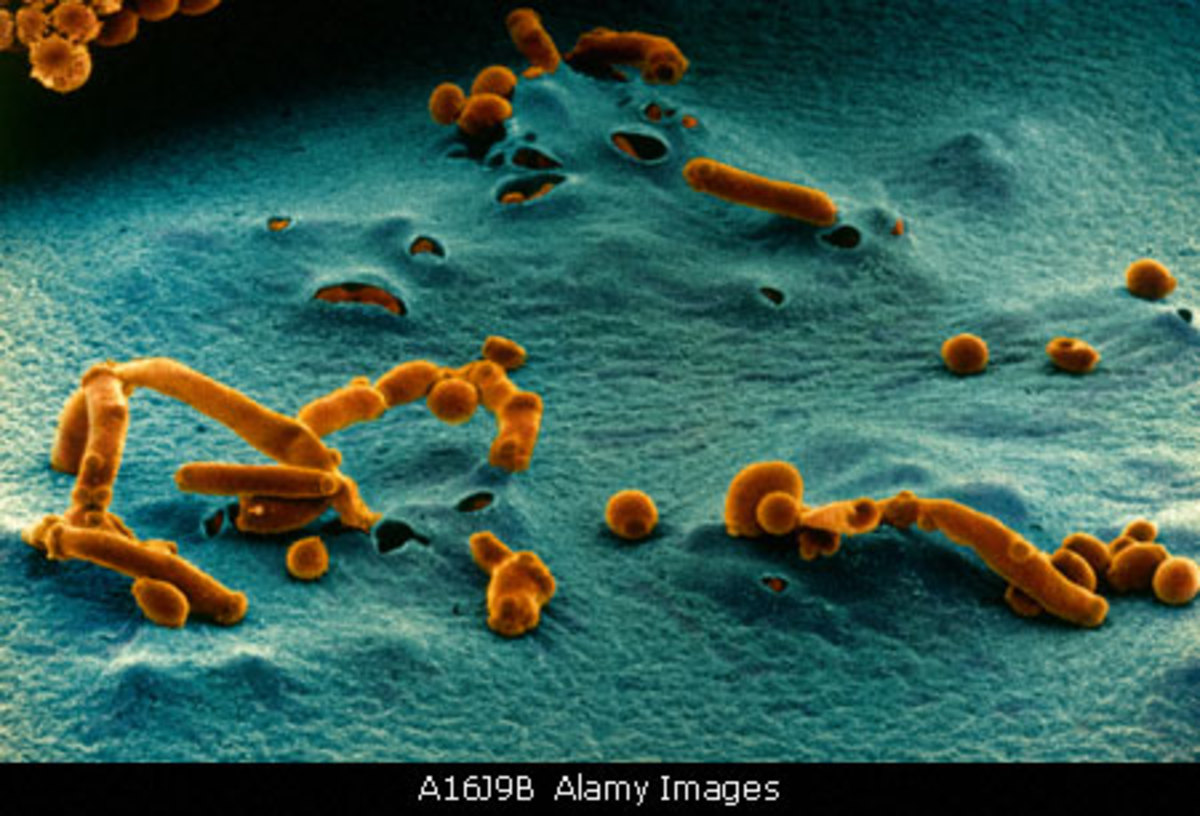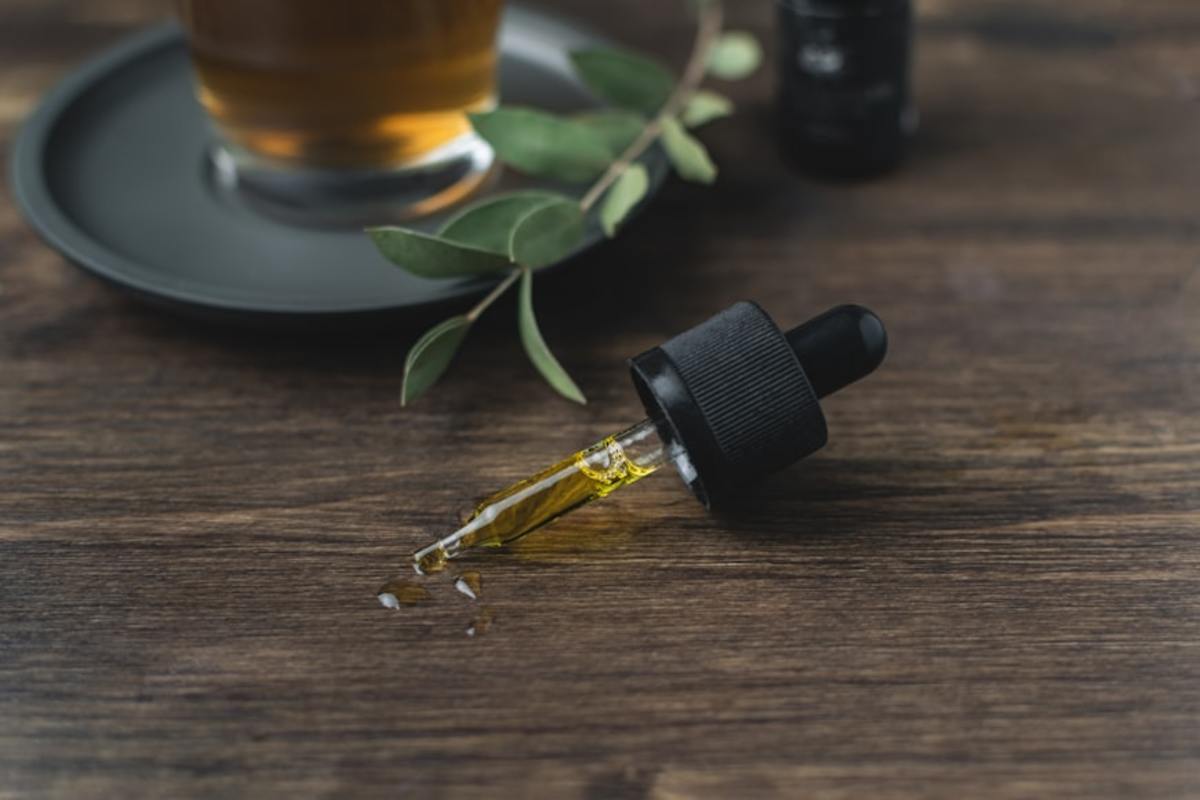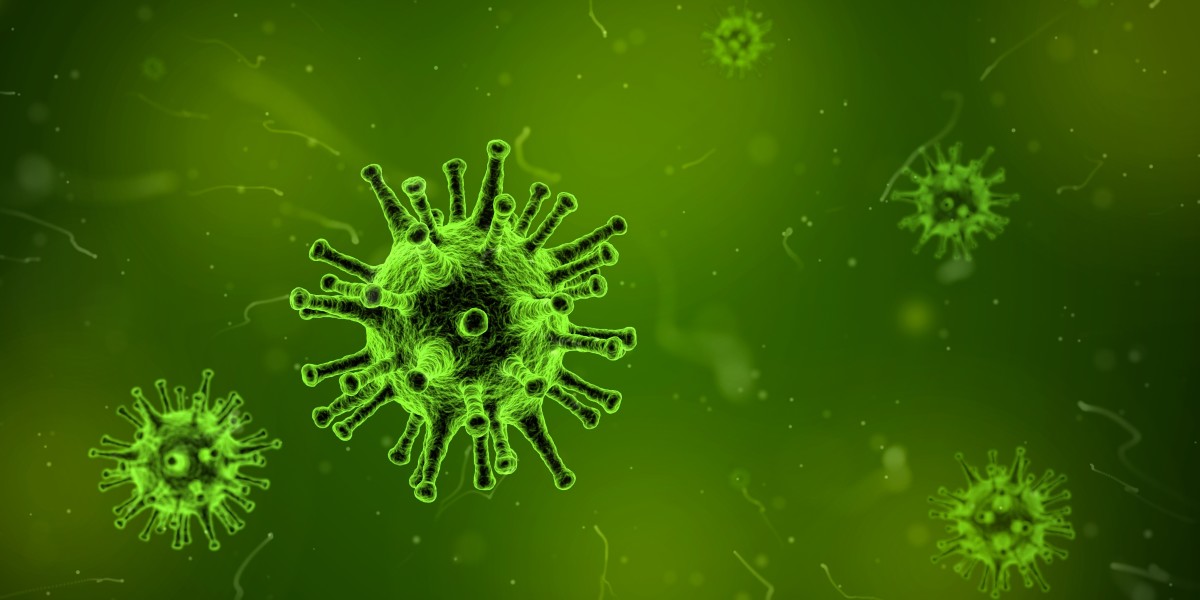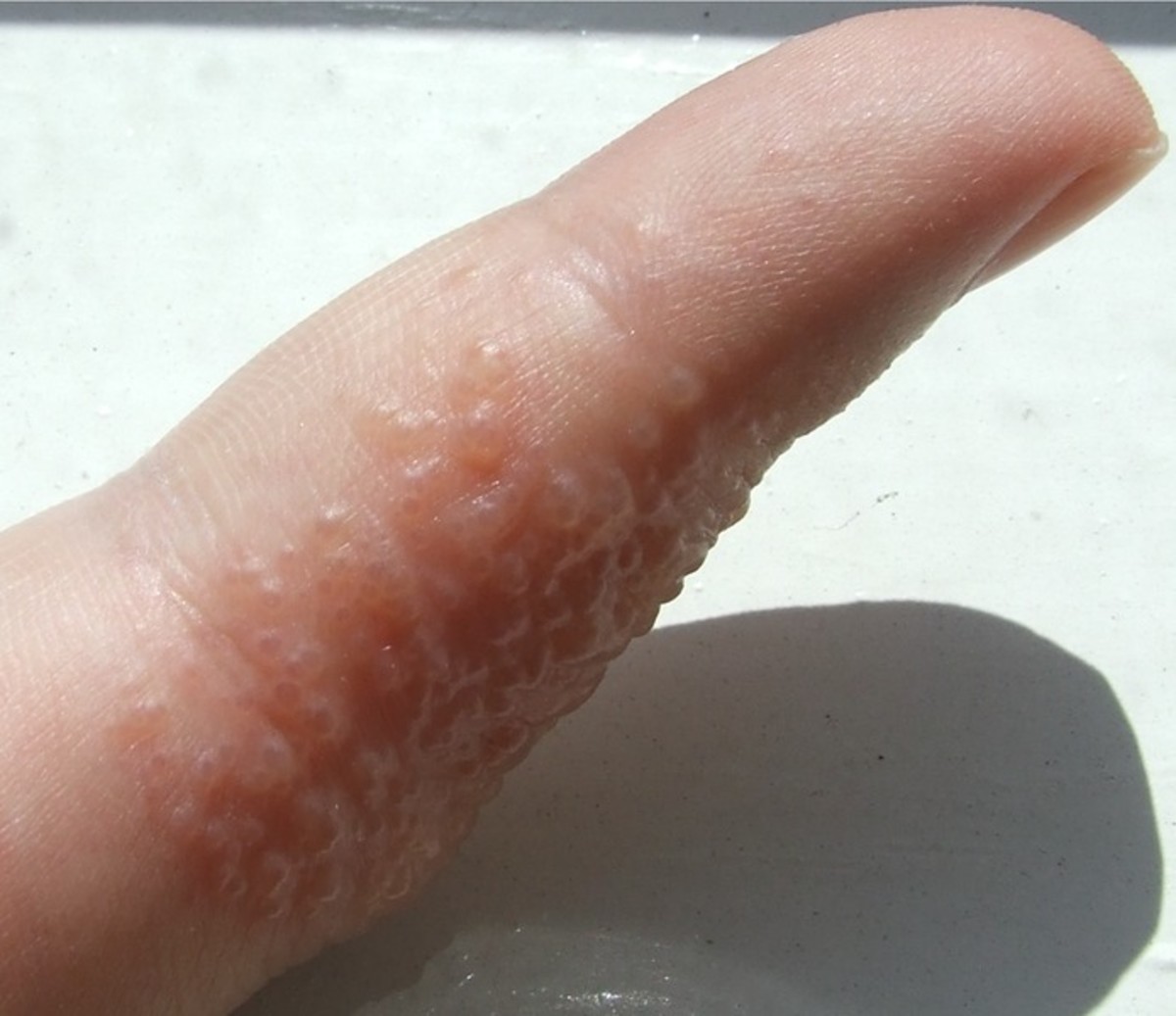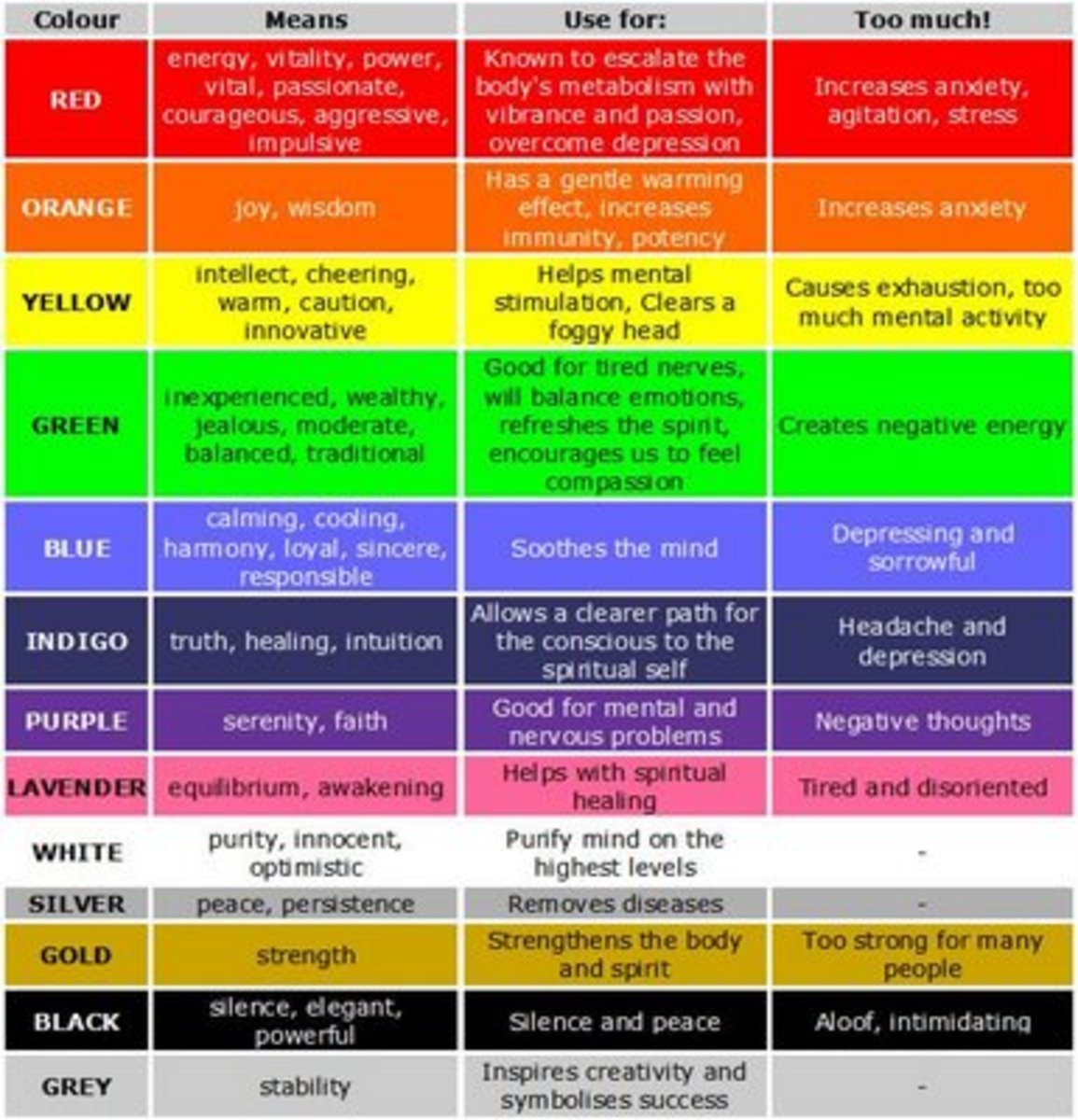Colds and Flu – A Natural Approach
The Cold Virus

Discussion
This article is being written in early December, which in the Northern Hemisphere at least is the most likely time to contract colds or flu. Colds are a nuisance, which can become a severe nuisance in some circumstances; for example, aeroplane pilots can be grounded by them and divers have problems as well. Flu (short for influenza) is a similar disease with usually more severe symptoms, which can be dangerous in vulnerable individuals. In fact, every so often flu becomes dangerous in people who shouldn’t be vulnerable; the most extreme example of this was the “Spanish flu” of 1918, which was most dangerous for fit, healthy soldiers. This was a nasty little footnote to World War I; many soldiers who had survived four years of nightmare finally succumbed to a common virus.
Colds and flu are the problem they are because they circumvent the normal processes of the immune system. For most diseases, if you’ve had it once then you are immune thereafter; but colds and flu make minor changes to the chemical composition of the virus’s surface at random intervals, the result being that immunity to colds and flu is impossible to achieve. Simply put, this year’s flu is not the same as last year’s.
Vaccination is not normally offered against colds, because the (fairly small) risk of the vaccination itself is higher than the risk associated with getting a cold. For flu, and for some vulnerable groups (those who are elderly or have certain pre-existing medical problems) vaccination is often offered; but the vaccination has to be repeated year after year because the virus changes at least that often.
Viruses, colds and flu included, have very few cures in conventional medicine; antiviral drugs do exist, and are sometimes used for particularly severe strains or in vulnerable patients – but for most people the cure is worse than the disease, and of course cost is a possible issue especially in countries such as the UK with nationalised medicine.
Most conventional treatments for colds and flu are aimed at the symptoms; for example paracetamol (acetaminophen) is often suggested because it helps with the muscle pain of flu and also lowers temperature in fevers. Antibiotics are completely worthless against colds and flu; antibiotics only kill bacteria. However, antibiotics are sometimes prescribed for the opportunistic bacterial infections that can accompany colds and flu.
There is no conventional cure for colds and flu, but some people suffer from colds and flu a lot more often and more severely than others; this might appear to be a contradiction, but this fact gives a clue to what can be done to alleviate colds and flu.
The immune system is the key to dealing with or preventing colds and flu; this is the case with any infectious disease, but especially with viruses including colds and flu. However, sometimes the immune system needs some help. The natural approaches to this help against colds and flu fall into two categories; prevention and treatment.
Prevention
Prevention of infections, including colds and flu, is a matter of keeping the immune system in good order. One aspect of this that applies particularly to colds and flu is keeping the mucous membranes of the breathing passages in good order; these are the body’s first line of defence against colds and flu. Keeping the immune system in good order is achieved almost entirely by proper nutrition. The range of nutrients needed for this is great enough that the probable best way of ensuring adequate amounts is a high-quality, high-strength, comprehensive multivitamin/mineral. The only exception to this is vitamin C; the amount of this needed for optimum health is so large (about 2000-3000 mg per day) that extra vitamin C is needed. Depending on the multivitamin you choose, extra selenium might also be in order; for some reason, even the best multi-nutrients often don’t contain enough.
Some herbs also help the immune system and can be taken long-term; the most likely to fall into this category are adaptogens such as ginseng, Siberian ginseng (actually a different plant), Rhodiola rosea, ashwaganda, astragalus and cat’s claw. Of these, the two herbs astragalus and cat’s claw are the most oriented towards the immune system.
Garlic is also a fairly powerful anti-pathogenic herb, effective against all types of pathogen to varying degrees, and is often taken for its other properties; it is also the only herb in this list commonly used in food.
Taking these steps is likely to prevent the emergence of obvious symptoms of colds and flu, or lessen them enough that taking further steps is not necessary; but if this line of defence fails then there are other steps that can be taken to lessen the severity and duration of colds and flu symptoms.
Treatment
Most of the natural methods of dealing with colds and flu are best used at a very early stage; if you have a streaming cold and/or stuffed up sinuses and bronchitis, then it is very likely that the virus is already on its way out. There is a reason for this. Viruses are unlike bacteria and other pathogens, in that they reproduce by taking over the machinery of body cells for their own purposes. This means that essentially the only way the immune system has of killing viruses is to kill the cells they are in. The greatly increased mucus production in colds and flu is the body’s way of getting rid of the debris this produces.
This means that if you want to use natural methods against colds and flu then it is a good idea to keep the relevant supplements on hand; otherwise, by Murphy’s Law, one can guarantee that cold or flu symptoms will start on a weekend when you can’t go and buy them in time! The best time to take natural colds and flu remedies is in the first few hours, for example when you feel the first tickle in the back of the throat.
For use against an active cold or flu, some of the preventative herbs mentioned above can help, usually in much larger amounts; the most likely to help is cat’s claw. In addition, some herbs unsuitable for prevention can help here; the two main immune-boosting herbs for this are the fairly well known Echinacea and the rather less well known Andrographis, which is an Ayurvedic herb that undoubtedly has an ayurvedic name. One herb that works very well indeed, but by a different route, is black elderberry; this is usually used in extract form.
Elderberry works by blocking virus reproduction; it does this by blocking the virus from entering the cells of the body. Compounds in elderberry work by binding to the molecule-sized spikes that cover the viruses of colds and flu; these spikes are responsible for cracking open the cell wall so the virus can get in, and so if they are blocked cold and flu viruses cannot infect the cell in the first place. There are no known side effects of elderberry, which cannot be said for the various antiviral drugs.
Vitamin C in very large amounts can help against all viruses, including colds and flu. The amount required for this is huge; some natural practitioners use 20 grams or more per day. In fact they often talk about supplementing to “bowel tolerance” levels; bluntly put, this means increasing the dose until it gives the patient diarrhoea, and then cutting back a little. It is notable that severe infections with colds and flu lead to higher bowel tolerance levels than do mild infections.
Zinc in lozenge form is directly toxic to cold and flu viruses; the way to use these is to suck lozenges (typically containing 25mg or so of zinc) several times per day. This works but has two disadvantages; they taste terrible, and also cannot be used for very long – very high levels of zinc for long periods can be toxic.
Grapefruit seed extract is also useful in the same way, as a gargle, but tastes even worse!
All of these methods are best used very early in the progress of colds and flu. By contrast another herb, garlic, works best when you are already stuffed up with mucus and catarrh. Garlic is effective against viruses to some extent, but its main use is to liquefy the mucus so that your body can get rid of it faster.
Finally, very basic traditional methods such as breathing in steam and/or such oils as eucalyptus and peppermint can help to liquefy the mucus and get rid of it faster. If using such oils, don’t use too much! I can offer some personal experience of this. I once had a really bunged-up nose and decided to use such an oil to help clear it. I used maybe five times as much as the instructions said, and it was extremely unpleasant.


